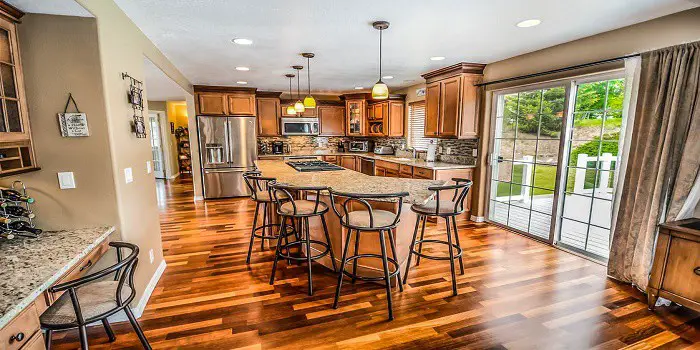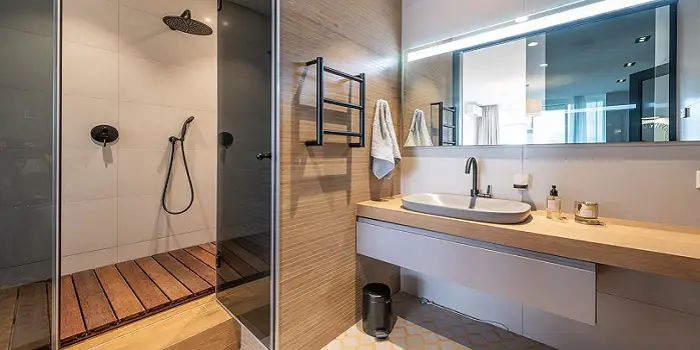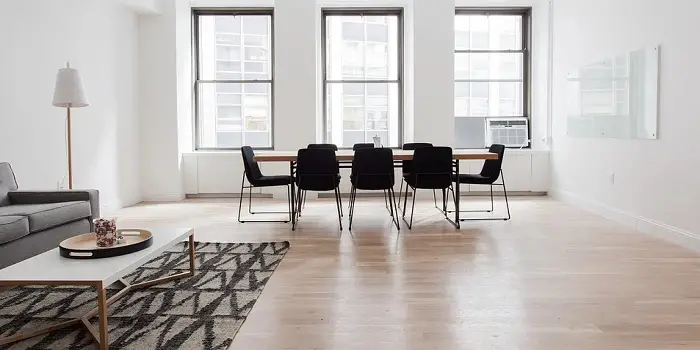
There are several different types of wood that are commonly used for flooring.
And while each type has its advantages, there are a few that combine durability with easy maintenance and a beautiful appearance.
Tigerwood is one such wood that is becoming more popular thanks to its remarkable properties.
For those who are considering putting in wooden flooring, Tigerwood is certainly a viable option.
What is Tigerwood?
This species of wood goes by several names, including bototo, zorrowood, Brazilian Koa, Congowood, and African walnut to name a few.
The color of Tigerwood tends to be a tan brown that has undertones of orange and red.
As with many light-colored kinds of wood, they tend to darken over time.
This is where Tigerwood gets its name as it becomes a deep brown color with strong hints of red.
The dark color tones stripe the wood much like its tiger namesake.
Properties:
| Scientific Name: | Astronium spp. (A. graveolens and A. fraxinifolium) |
| Tree Size: | 100-130 ft (30-40 m) tall, 3-5 ft (1-1.5 m) trunk diameter |
| Janka Hardness: | 2,170 lbf (9,640 N) |
| Type: | Hardwood |
| Average Dried Weight: | 57 lbs/ft3 (905 kg/m3) |
| Specific Gravity (Basic, 12% MC): | .80, .91 |
| Color: | Medium reddish brown colored heartwood which tends to darken with age |
| Workability: | Despite its high density, it’s not too difficult to work |
| Common Uses: | Flooring, furniture, cabinetry, carving, turned objects, veneers along with many small wooden objects such as pool cues, archery bows, knife handles, etc. |
Applications:
Tigerwood has become a popular wood not only for flooring but also for furniture and a variety of other specialty items in sports and other industries.
It offers many applications with the advantage of not having to be stained given its natural color variations.
Its luster is what has made it so popular in recent years.
However, it also is quite dense, durable, and stable which are also attractive features for homeowners looking for dependable wood for their flooring needs.
Growing Popularity:
Interestingly enough, Tigerwood has been in the US since the turn of the 20th century but did not become popular until much later.
The original use of Tigerwood was fashioning musical instruments such as violins and pipe organs.
It was only much later that the properties of the wood began to get noticed.
It was not long before Tigerwood branched out into different applications such as furniture, decks, and boats.

Why Use Tigerwood for Your Flooring?
Given all the attributes listed above, it is arguably no surprise that Tigerwood is fast becoming a popular wood for flooring.
It manages to combine an exotic look with desirable features that creates a perfect storm of positive attributes that homeowners will love.
The Advantages
The boom in wooden flooring over the past few decades has been spurred in no small way by the introduction of Tigerwood.
However, as perfect as Tigerwood may sound, even it has its downsides.
But before they are listed, here is why you should consider Tigerwood as your next choice for hardwood flooring.
1- Color
Right off the bat, there are few kinds of wood as exotic and stunning in appearance as Tigerwood.
It is immediately noticeable, yet it also can work with many décor options for your home.
The color range from light brown to deep reddish-brown is remarkable and when you throw in the black stripes it only makes it look more amazing.
2- Durability
Besides attractive color, another strong attribute is its durable nature.
Tigerwood has a long lifespan, often much longer than some of the softer woods that are commonly used for flooring.
This means that even if you pay more, the cost will be less over time thanks to its longevity.
For those who are considering creating a deck or outdoor furniture, Tigerwood which comes from Brazil is an excellent choice.
This is because the wood is highly resistant to fungus and mold while also being nearly impervious to rot and decay over time.
One of its more remarkable qualities is how the wood dries naturally with little to no warping.
This makes it highly resistant to shrinkage once the wood has dried out.
Add in the superb durability of Tigerwood and you have what seems to be the perfect natural product for a wide range of uses.
3- Hard Surface
In addition to being durable, the surface is also quite hard.
Ranking near the top as one of the densest woods available, Tigerwood does vary somewhat depending on where it was grown.
It may seem difficult to believe, but the denser varieties of Tigerwood make it up to 67% harder compared to Red Oak Wood.
This means that it is more difficult to scratch, and dent compared to other, softer woods.
Plus, the density of the wood resists fungi, mold, and decay which only helps to make it last longer.
4- Can be Stained and Sanded
Because tigerwood is naturally high in oil content and low in pores, it does not need to be stained or painted to maintain its charming appearance.
But that does not mean it can’t be painted or stained.
If you want to change the color or maintain the natural luster, the lumber can be sanded and stained with a color of your choice.
For a natural look, you can even choose to coat it with a clear stain which again provides your flooring an enhanced protective layer and added durability.
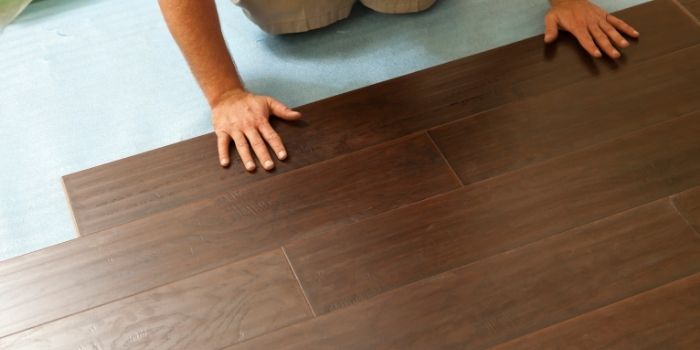
The Disadvantages
There is simply no wood that looks like Tigerwood. And there are big reasons for the rise in popularity of Tigerwood.
But there are a few drawbacks too with this type of wood. Some of them include:
1- Allergic Reaction
The single biggest downside is that Tigerwood produces a powder that can irritate the skin and eyes.
This is why it is strongly recommended that you do not install the Tigerwood yourself.
Instead, hire a professional company that will clean up thoroughly once the job is complete.
That way, you can avoid the powdery sawdust that can cause an unpleasant reaction to the skin and eyes.
2- Can be difficult to work
One of the main attributes of Tigerwood, its density, makes it difficult to work with especially if you are using hand tools.
This also means that the density of the grain and its structure can wear down the teeth and blades rather quickly, especially in terms of angled cutting.
This is why carbide tips are recommended for those who are cutting Tigerwood, especially when creating edges or cutting at angles.
3- The Dark Color – It’s Not a Favorite for All
The very color that is a strong attribute of Tigerwood does become problematic over time as the wood becomes darker and darker.
This means that the beautiful deep red-brown coloring will become even darker until it turns rather murky in some cases.
This is mostly caused by the UV rays from sunlight, so limiting the exposure or adding UV protection can keep the coloring from changing to its darkest state.
Having said that, since the color-changing process generally takes ten years or longer, many people simply do not notice the gradual change of the color over time and may not even mind.
Another issue with the density is that to place screws or nails, pre-drilling the holes is a requirement.
However, the extra work is worth it given the overall durability of the wood itself.
Plus, you can use glue with ease in placing the hardwood and avoid having to puncture holes in the material itself.
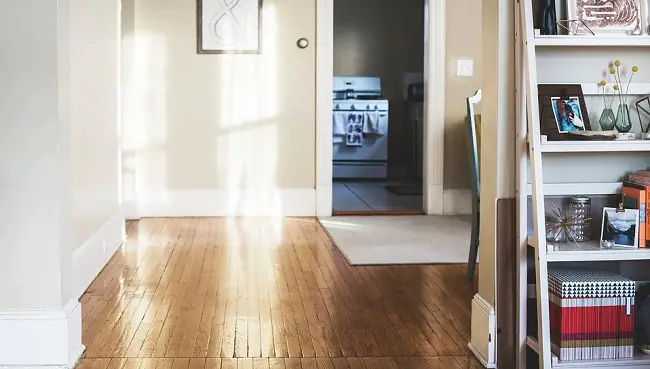
Different Types of Tigerwood Species to Choose
There are several types to choose from which may make selecting the proper Tigerwood for your needs seemingly difficult at first.
However, all of them share the same basic attributes, so the real difference is going to be their appearance.
1- Astronium Fraxinifolium
You mostly see this type of Tigerwood used for furniture and cabinets, but it makes for good flooring as well.
You’ll find this specific species in the Atlantic Forest and the Amazon Rainforest as well.
Many will call this species ‘Kingwood’ or ‘zebrawood’ thanks to its striped appearance.
This species is also difficult to cut thanks to its heavy, compact nature.
But it is often worth the extra effort thanks to the beautiful coloring which ranges from light to dark red.
The wood begins as a light brown color, and it starts to darken over time.
The spacing of the veins which are black and brown in color gives it the striped appearance that is best noted.
The range of applications for this wood runs from furniture to flooring, exterior joining, and even carving.
It is a remarkable wood that is quite versatile despite its heavy, compact nature.
Perhaps because while it is more difficult to work compared to softer woods, the results will last for a considerably longer time.
What makes this type of wood so popular apart from its appearance is the resistance it has to termites, fungi, mold, and dry wood borers.
This means that it works well for indoor and outdoor flooring, as long as there is proper drainage.
2- Goncalo Alves
This species of Tigerwood emanates from South America, most notably Paraguay, Uruguay, and Brazil.
This species has a light, golden brown appearance that eventually turns to a darker reddish-brown.
Because of the mottling, it is often compared to rosewood.
But Tigerwood is considerably more durable and long-lasting.
The tight grains and fine texture help create a stunning, glass-like finish when polished.
However, it is recommended that adhesives be used given that nails and screws must have the holes pre-drilled first.
And thus, the wood should be treated using a solvent to ensure that the glue properly sticks to the surface.
But it does create a remarkable appearance that makes it quite popular for flooring and furniture.
Plus, it can be relatively easy to work with when the proper approach is used.
3- Lovoa Trichiliodes
Belonging to the Meliaceae family of Tigerwood, this is one of the most common and easily accessible species.
It grows quite tall in the forest, often reaching over 100 feet or more in height.
This type of tree is mostly found in Africa up to the edges of the Sahara.
The grains are interlocked, and the texture of the tree is exceptional.
It also sports a combination of black and golden markings across a yellow-brown color.
This species also features a relatively wide band of pale brown or pale grey sapwood which can be quite lustrous in appearance.
As popular as this species is for flooring, it is often used as decorative veneer, cabinets, stairways, paneling, and more.
Final Thoughts
As you can see, there are several varieties of Tigerwood that make for exceptional flooring options.
The inherent strength of the wood, the resistance to mold, fungi, and other organisms, and its remarkable appearance have put it at or near the top on most homeowners’ lists.
The only questions about Tigerwood are its very strengths of compactness, tight grains, and exceptional hardness that make working with the wood rather difficult at first.
However, once in place you have wooden flooring that will last considerably longer than most other woods, particularly softwoods.
Share the post "Tigerwood Flooring – The Pros and Cons With Different Types"

Hi, I am Mark Garner a professional carpenter, woodworker, and DIY painter. I live in the small city of Peoria, Arizona as a semi-retired woodworker. I have started this blog with a simple motive to help you with my wood experience in this sector. If you like to know more about what I love doing and how it all got started, you can check more about me here.


